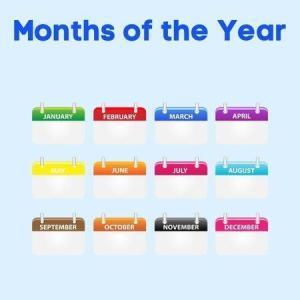Days Of The Week, Months Of The Year, Seasons, Weather, And Time In Tagalog
If you’re aiming for fluency in Tagalog, it’s wise to master words related to time, as early as possible. This vernacular is crucial in daily conversation as it allows you to describe when something occurs. Consequently, being able to do so makes all the difference in the message you’re trying to convey.
In this article, we’ll cover many of the “time terms” you’ll need to get started with Tagalog. These include the usual suspects: days, months, and seasons, plus weather vocabulary, as this goes hand-in-hand with the seasons and the passage of time.
We’ll also teach you the commonly-used adverbs of time, so you can string together complete sentences about when things happen.
And because we love ya, we’ve separated everything into categories for easy perusing.
Okie dokie, let’s get started.
Days of the Week in Tagalog
First up, we’ll take a look at the seven days of the week. Now, for those of you who know some Spanish, you’ll notice that these words are almost identical to their Spanish counterparts. That’s because Tagalog has a lot of Spanish influences in its vocabulary.
| Days of the Week (English) | Mga araw sa isang linggo (Tagalog) |
|---|---|
| Monday | Lunes |
| Tuesday | Martes |
| Wednesday | Miyerkules |
| Thursday | Huwebes |
| Friday | Biyernes |
| Saturday | Sabado |
| Sunday | Linggo |
Months of the Year in Tagalog
Next, we’ll introduce you to the twelve months of the year. Just like the days of the week, the Tagalog names are derived from Spanish, though the spellings are slightly different.
| Months of the Year (English) | Mga buwan ng taon (Tagalog) |
|---|---|
| January | Enero |
| February | Pebrero |
| March | Marso |
| April | Abril |
| May | Mayo |
| June | Hunyo |
| July | Hulyo |
| August | Agosto |
| September | Setyembre |
| October | Oktubre |
| November | Nobyembre |
| December | Disyembre |
Saying the Date in Tagalog
Naturally, it would make sense to learn how to say the date, if we’re talking about months. And we’ve got you covered.
Saying the date in Tagalog isn’t overly complicated. The general format is: ordinal number + ng + month + ngayon (today). Check out the examples below.
| What’s the date today? | Anong petsa ngayon? |
|---|---|
| It’s the fifth of March today | Ikalima ng Marso ngayon. |
| It’s the twenty-third of October today | Ikadalawampu’t tatlo ng Oktubre ngayon. |
Seasons in Tagalog
Now that we know how to say the months, let’s move on to the seasons. Now, technically, due to the tropical climate of the Philippines, there are only two seasons: wet and dry.
However, for the purposes of this article, we’ll give you the names of all four seasons.
| Seasons (English) | Mga Panahón (Tagalog) |
|---|---|
| Spring | Tagsiból |
| Summer | Tag-aráw |
| Autumn (Fall) | Taglagás |
| Winter | Taglamíg |
The Weather in Tagalog
When discussing the seasons, it makes sense to learn some weather vocabulary, too. That way, you can paint a picture with your words and really describe what the current conditions are like.
| Weather (English) | Panahón (Tagalog) |
|---|---|
| Rain | Ulán |
| Snow | Niyebe |
| Sun | Araw |
| Wind | Hangin |
| Clouds | Mga ulap |
| Fog | Hamóg |
| Lightning | Kidlát |
| Thunder | Kulóg |
| Storm | Bagyó |
| Hot | mainit |
| Cold | malamíg |
Time in Tagalog
In this section, we’ll introduce you to time-related words in Tagalog. These include words for time in its abstract sense, such as adverbs of time, as well as words for its more concrete forms, like “hour” and “minute.”
| Time (English) | Oras (Tagalog) |
|---|---|
| morning | umaga |
| afternoon | hapon |
| evening | gabí |
| night | gabí |
| midnight | hátinggabí |
| dusk | dápit-hapon |
| dawn | madaling-araw |
| second | segundo |
| minute | minuto |
| hour | isang oras |
| day | araw |
| week | linggó |
| weekend | Sabado at Linggó |
| month | buwán |
| year | taón |
| decade | dekada |
| century | siglo |
| today | ngayón |
| yesterday | kahapon |
| tomorrow | bukas |
| tonight | ngayóng gabí |
| late | nahuli |
| early | maaga |
| now | ngayón |
| soon | malapit na po / agád |
Telling the Time in Tagalog
You’ll probably want to learn how to tell the time, should you find yourself in the Philippines. After all, it would be pretty difficult to schedule anything if you don’t know what time it is.
There are actually two ways to tell the time – the Spanish way (using “ala/alas” + Spanish cardinal numbers) and the Tagalog way (using “ika” + Tagalog ordinal numbers). We’ve included examples of both so you become familiar with both methods.
| What’s the time? | Anong oras na? |
|---|---|
| It’s seven o’clock | Alas siyete. |
| It’s four o’clock | Alas kuwatro. |
To talk about minutes after the hour, you’d simply use the Tagalog word “at”, followed by the minutes. Example:
- 3:21 = “Ika-tatlo at dalawampu’t isa”.
And if you want to talk about minutes to the hour, the format would go something like this: minutes + the word “minuto”, + the Tagalog word “bago mag” (before), + “ika” + the coming hour. Example:
- 5:50 (10 minutes to 6) = “Sampung minuto bago mag ika anim”.
If you want to get specific about what part of the day you’re referring to (morning or afternoon), you’d simply tack the Tagalog words for those terms at the end of the sentence.
We hope this has been useful in introducing you to some commonly-used Tagalog vocabulary.
There’s a lot to learn and remember, so we recommend you bookmark this page so you can come back and review as often as you need to.
If you’re in the mood to learn some more Tagalog, why not head on over to our Funny Tagalog Quotes and Proverbs post to learn about the Tagalog language in a more light-hearted way?
Or, maybe you want to boost your Tagalog reading skills. In that case, you might like our list of Tagalog Stories for Kids: The 10 Best Books to Read.
Have fun!









